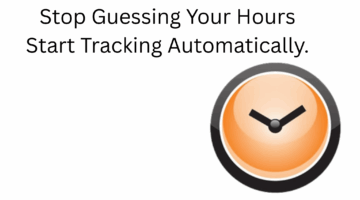
(Image via Getty)
The National Labor Relation Board’s (NLRB) general counsel has issued a memorandum that clearly states her position is that many college athletes are employees and that they have been misclassified as mere student-athletes. It opens the door to college athletes attempting to unionize and collectively bargain under the National Labor Relations Act (NLRA).
It also signals that NLRB General Counsel Jennifer A. Abruzzo intends to take action in the near future. She closes her nine-page memo by stating that she will be taking the legal position that college athletes are employees under the NLRA “in future investigations and litigation” and that she will consider pursuing a misclassification violation. In a footnote on the final page of the memo, Abruzzo further states that in appropriate circumstances she will consider pursuing a joint employer theory of liability to attach the NCAA and athletic conferences with certain member institutions even if some member schools are state institutions.

Chrometa: Turning Time Into Billable Value For Modern Lawyers
Adoption of Chrometa represents more than a technological upgrade; it reflects a professional philosophy that values accuracy, transparency, and efficiency.
Abruzzo’s memo begins with reference to a memo from four years prior — GC 17-01 — which addressed an issue where Northwestern football players sought to unionize, with the full NLRB ultimately declining to exercise jurisdiction over a representation petition and punted on resolving whether college athletes should be deemed employees under the NLRA. The memo from four years ago highlighted that nothing in the NLRB’s decision in declining to exercise jurisdiction over scholarship players at Northwestern University precludes the finding that football players at private colleges and universities, or similarly situated college athletes, are employees under the NLRA. As such, Abruzzo decided with her newly issued memo to reinstate GC 17-01, which was rescinded after it was published.
The core of Abruzzo’s argument focuses on the common law definition of an employee, which includes a person who performs services for another and is subject to the other’s control or right of control. Receipt of payment is strongly indicative of employee status. Therefore, Abruzzo concludes that scholarship football players at Division I FBS private colleges and universities, along with similarly situated players at colleges, are employees under the NLRA.
“Indeed, Players at Academic Institutions perform services for their colleges and the NCAA, in return for compensation, and subject to their control,” Abruzzo stated in her memo. The athletes participate in sports (perform a service) for the colleges and the NCAA, they receive significant compensation in the form of their scholarships, and the NCAA controls the maximum number of practice and competition hours, scholarship eligibility, limits on compensation, minimum grade point average, and restrictions on gifts and benefits players may accept.
A lot has changed in the world of college sports since GC 17-01 was issued and then later rescinded, and Abruzzo makes an effort to point out the relevancy of those changes. First, the U.S. Supreme Court issued a unanimous decision in the case of NCAA v. Alston, and the memo focuses on Justice Kavanaugh’s concurring opinion where he questioned “whether the NCAA and its member colleges can continue to justify not paying student athletes a fair share” of the massive revenue generated. Abruzzo also picks up on Kavanaugh’s conclusion that college athletes could potentially engage in collective bargaining in the future to provide them with a fairer share of those revenues.

AI-Enabled Marketing: Your Secret Weapon for Growing Your Legal Practice
Drowning in marketing to-dos? Learn how firms use AI—the right way—to build lead magnets, rank in AI search, turn referrals into revenue, and craft data-driven business plans.
Abruzzo then turns to name, image, and likeness (NIL) prohibitions that were removed by the NCAA on June 30, 2021, and finds that the freedom for college athletes to now engage in lucrative business enterprises makes them much more similar to professional athletes, who are deemed employees of their teams.
Lastly, Abruzzo looks at the collective action of college athletes in the recent past. She highlights activism surrounding social and racial justice issues, such as the Black Lives Matter movement, as well as #WeAreUnited and #WeWantToPlay campaigns. She adds that these players who have engaged in and will continue to take part in concerted activities to improve their working conditions have the right to be protected from retaliation.
Sports law professor Marc Edelman notes that while the memo from the general counsel of the NLRB is a wonderful step forward for college athletes, it is important to remember that the Northwestern football players who once unionized had their effort derailed not by lack of employee status, but due to the NLRB’s opposition to the unit, and that it is not yet clear whether this new memo has resolved “that dubious opposition.” Perhaps footnote 11 in Abruzzo’s memo could signal what is to come. She wrote that it is “important to note, as the Board explained in Northwestern University, that its decision not to assert jurisdiction in that one case does not preclude reconsideration of the issue in a future case.”
Darren Heitner is the founder of Heitner Legal. He is the author of How to Play the Game: What Every Sports Attorney Needs to Know, published by the American Bar Association, and is an adjunct professor at the University of Florida Levin College of Law. You can reach him by email at [email protected] and follow him on Twitter at @DarrenHeitner.